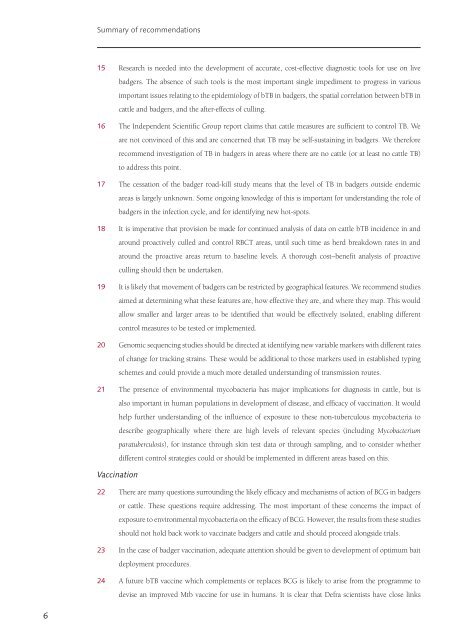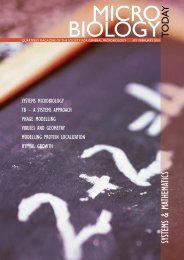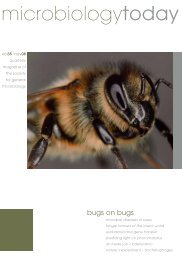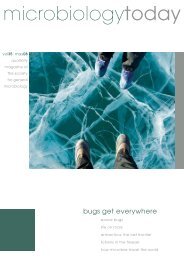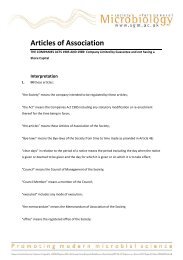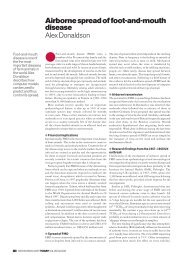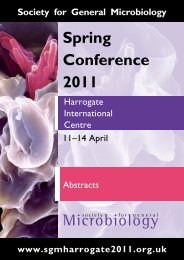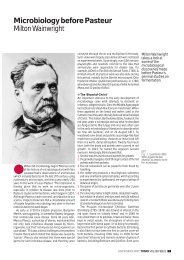final report - ARCHIVE: Defra
final report - ARCHIVE: Defra
final report - ARCHIVE: Defra
You also want an ePaper? Increase the reach of your titles
YUMPU automatically turns print PDFs into web optimized ePapers that Google loves.
Summary of recommendations<br />
15 Research is needed into the development of accurate, cost-effective diagnostic tools for use on live<br />
badgers. The absence of such tools is the most important single impediment to progress in various<br />
important issues relating to the epidemiology of bTB in badgers, the spatial correlation between bTB in<br />
cattle and badgers, and the after-effects of culling.<br />
16 The Independent Scientific Group <strong>report</strong> claims that cattle measures are sufficient to control TB. We<br />
are not convinced of this and are concerned that TB may be self-sustaining in badgers. We therefore<br />
recommend investigation of TB in badgers in areas where there are no cattle (or at least no cattle TB)<br />
to address this point.<br />
17 The cessation of the badger road-kill study means that the level of TB in badgers outside endemic<br />
areas is largely unknown. Some ongoing knowledge of this is important for understanding the role of<br />
badgers in the infection cycle, and for identifying new hot-spots.<br />
18 It is imperative that provision be made for continued analysis of data on cattle bTB incidence in and<br />
around proactively culled and control RBCT areas, until such time as herd breakdown rates in and<br />
around the proactive areas return to baseline levels. A thorough cost–benefit analysis of proactive<br />
culling should then be undertaken.<br />
19 It is likely that movement of badgers can be restricted by geographical features. We recommend studies<br />
aimed at determining what these features are, how effective they are, and where they map. This would<br />
allow smaller and larger areas to be identified that would be effectively isolated, enabling different<br />
control measures to be tested or implemented.<br />
20 Genomic sequencing studies should be directed at identifying new variable markers with different rates<br />
of change for tracking strains. These would be additional to those markers used in established typing<br />
schemes and could provide a much more detailed understanding of transmission routes.<br />
21 The presence of environmental mycobacteria has major implications for diagnosis in cattle, but is<br />
also important in human populations in development of disease, and efficacy of vaccination. It would<br />
help further understanding of the influence of exposure to these non-tuberculous mycobacteria to<br />
describe geographically where there are high levels of relevant species (including Mycobacterium<br />
paratuberculosis), for instance through skin test data or through sampling, and to consider whether<br />
different control strategies could or should be implemented in different areas based on this.<br />
Vaccination<br />
22 There are many questions surrounding the likely efficacy and mechanisms of action of BCG in badgers<br />
or cattle. These questions require addressing. The most important of these concerns the impact of<br />
exposure to environmental mycobacteria on the efficacy of BCG. However, the results from these studies<br />
should not hold back work to vaccinate badgers and cattle and should proceed alongside trials.<br />
23 In the case of badger vaccination, adequate attention should be given to development of optimum bait<br />
deployment procedures.<br />
24 A future bTB vaccine which complements or replaces BCG is likely to arise from the programme to<br />
devise an improved Mtb vaccine for use in humans. It is clear that <strong>Defra</strong> scientists have close links<br />
6


